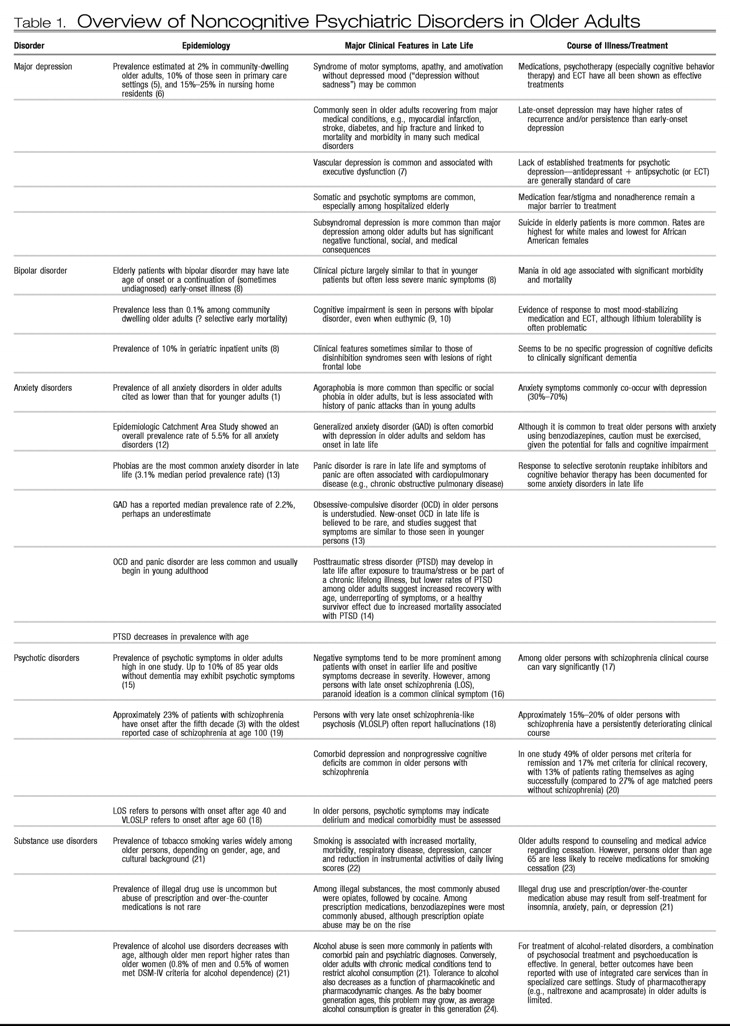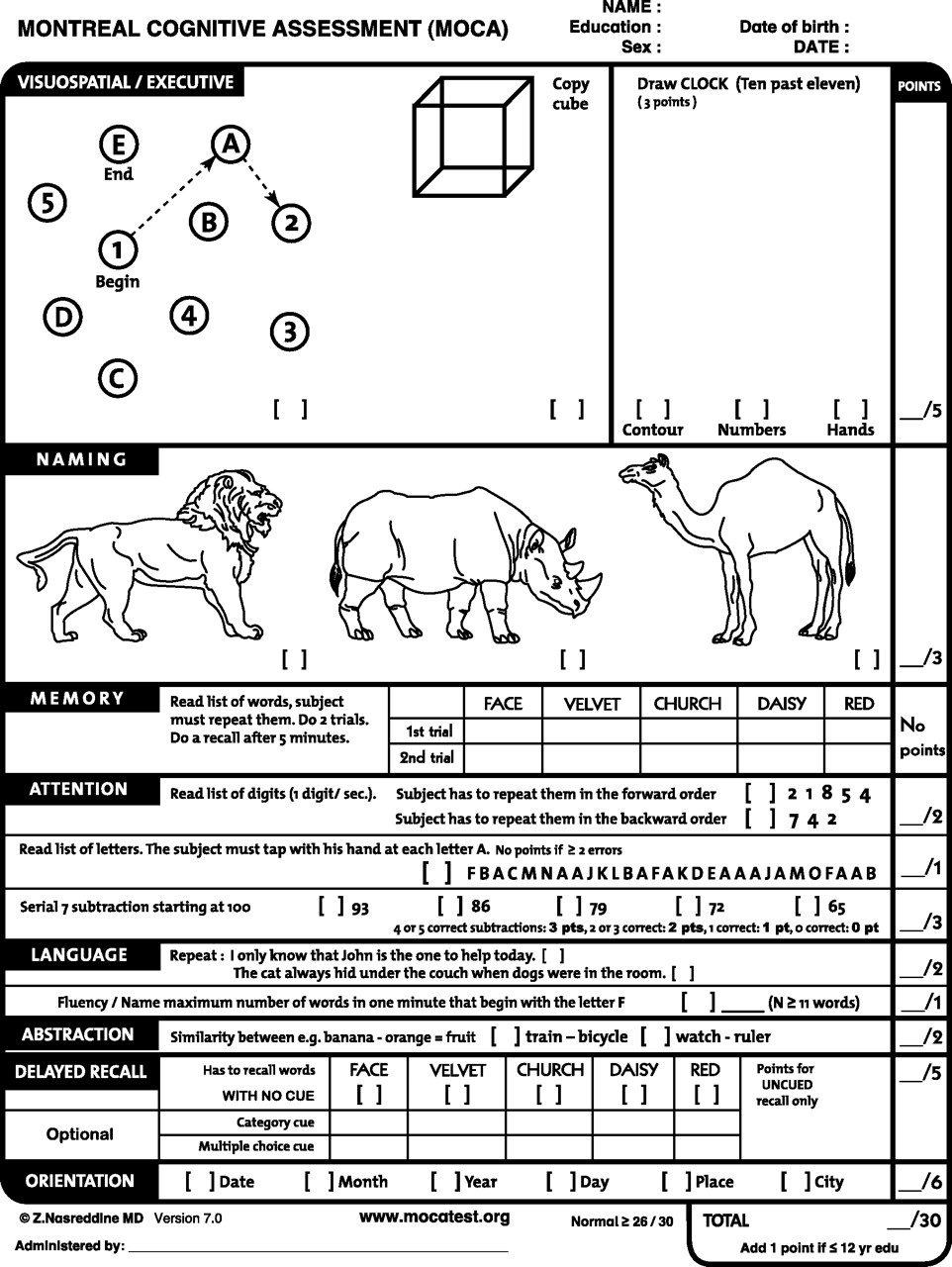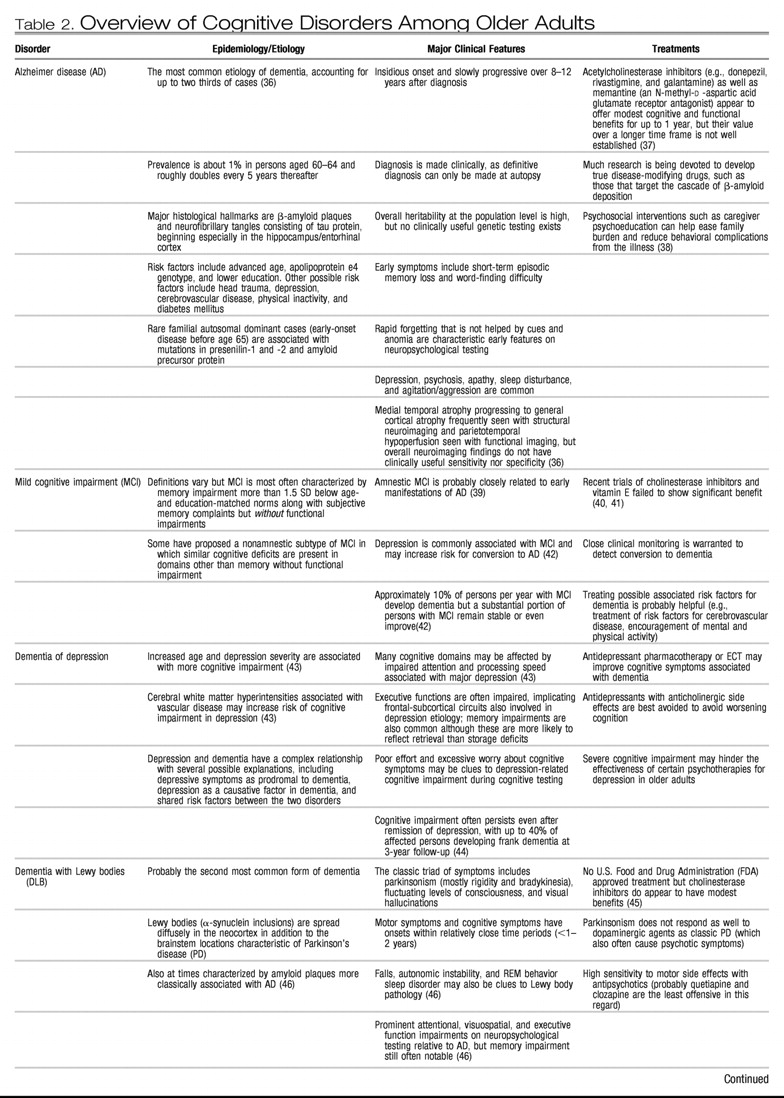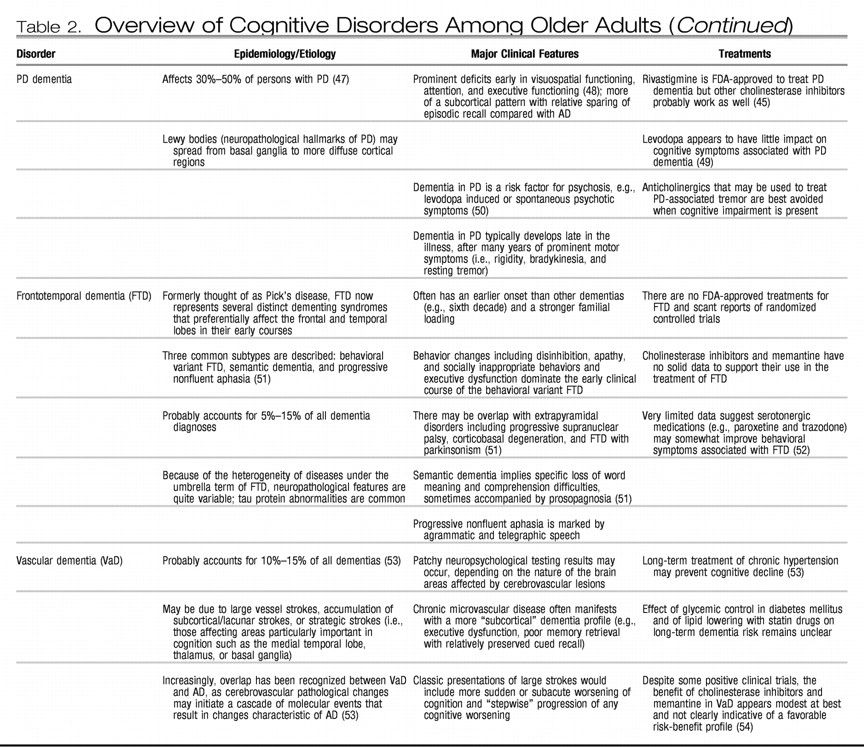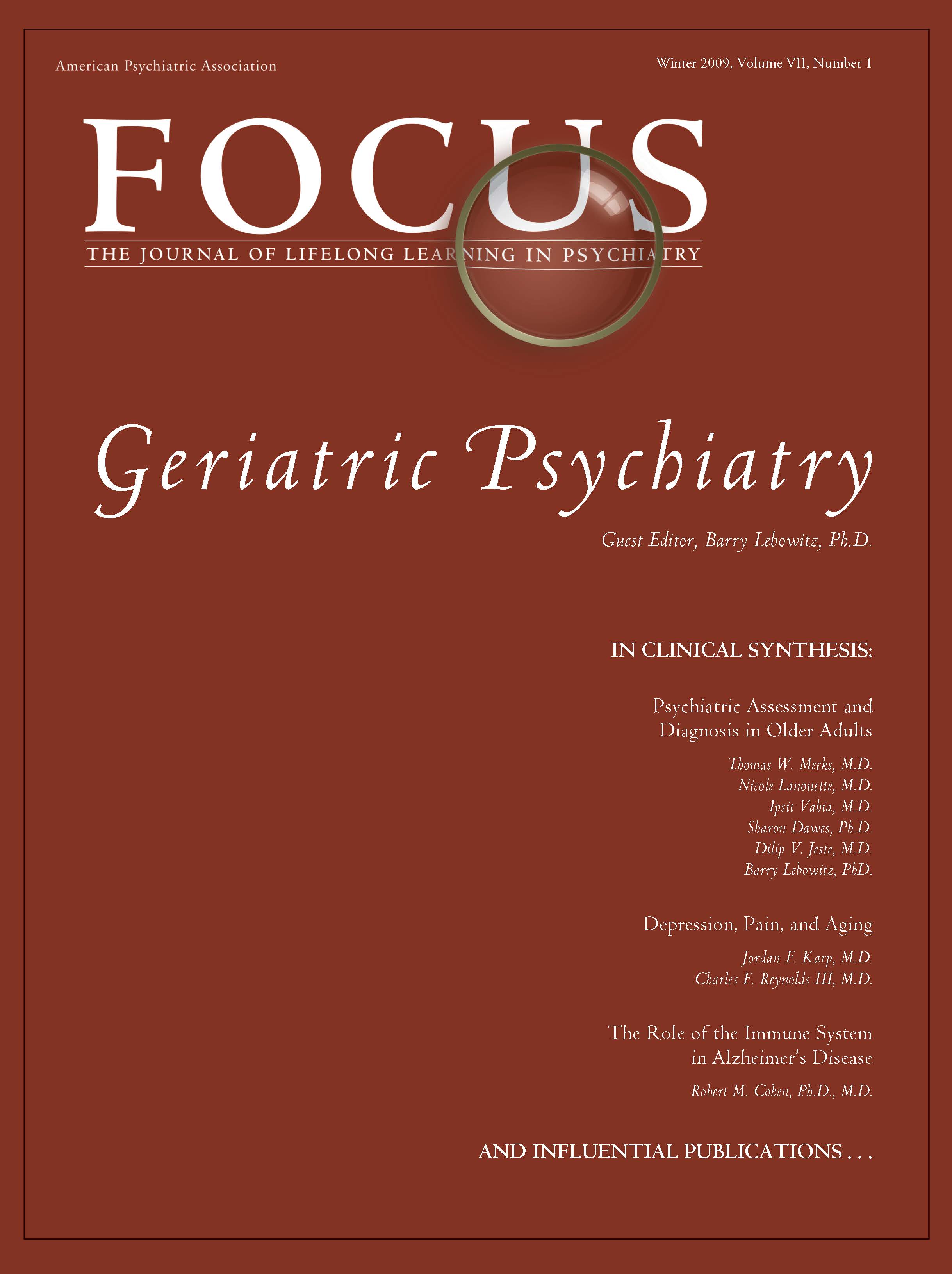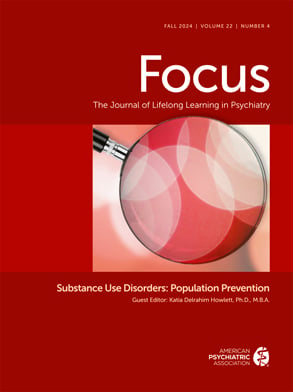Depending on an older adult's presentation and the treatment options being considered, a variety of laboratory tests may be indicated in the medical assessment of an older adult presenting with psychiatric symptoms. Laboratory tests to consider routinely obtaining include the following: 1) thyroid function tests (e.g., thyroid-stimulating hormone), because thyroid disease may cause depression, anxiety, and cognitive impairment (
112); 2) electrolyte levels, because alterations of these may significantly affect the central nervous system (e.g., hyponatremia-induced delirium due to the syndrome of inappropriate antidiuretic hormone or selective serotonin reuptake inhibitor treatment) (
113); 3) renal function tests (blood urea nitrogen and serum creatinine), because renal function is often reduced by age or age-associated illness, which may significantly affect the pharmacokinetics of medications (
114); 4) hepatic function tests (e.g., alanine aminotransferase and aspartate aminotransferase), because psychopathological conditions may significantly contribute to chronic liver disease via alcohol use and comorbid hepatitis C infection (
115); 5) complete blood count, because anemia may explain fatigue/depression, leukocytosis may point to an undetected infection, and many psychotropic drugs have hematopoietic side effects (
116); 6) lipid panel and fasting glucose, particularly if a patient is already taking or considering starting medications that could cause metabolic syndrome (
117); 7) rapid plasma reagin to test for syphilis and HIV antibodies if the patient has risk factors and consents, because prejudicial views of older adults may lead clinicians to dismiss their current or past sexual activity (
118); 8) urine drug screen to assess for substance use and breathalyzer or blood alcohol level, especially in emergency room settings, where, again, age may inappropriately lower clinicians' vigilance for substance use (
95); 9) urinalysis, because urinary tract infection may present exclusively with mental status changes in older adults (
119); 10) vitamin B
12 and folate levels, because deficiencies of these increase with age and may contribute to both depression and cognitive impairment (
42); and 11)drug levels of any prescription drugs patients are taking, especially those with low therapeutic indices (e.g., lithium, anticonvulsants, digoxin, and tricyclic antidepressants).
Other diagnostic tests to be considered in certain situations include the following: 1) chest radiograph for respiratory symptoms, signs of delirium, or fever; 2) neuroimaging (magnetic resonance imaging or computed tomography) to evaluate for stroke, mass lesions, or normal pressure hydrocephalus (
120); 3) electrocardiogram for acute mental status change, cardiorespiratory symptoms, or consideration of psychotropic agents that may alter cardiac conduction (e.g., lithium, tricyclic antidepressants, and certain antipsychotics) (
121); 4) electroencephalogram for paroxysmal symptoms that could be due to seizures, unusual or subacute dementias (e.g., Creutzfeld-Jacob disease), or diagnostic confusion between delirium versus dementia (although generalized slowing is present in both delirium and more advanced cases of dementia) (
122); and 5) lumbar puncture in patients with atypical cognitive disorders, fever without a clear etiology, or suspected neurosyphilis (
123).
Many invasive (e.g., lumbar puncture) or expensive (e.g., magnetic resonance imaging) tests may be unnecessary with a careful history and physical examination. Although the use of neuroimaging is clinically routine in the assessment of delirium, dementia, and late-onset psychiatric disorders, there is debate as to its cost-effectiveness and clinical yield in the absence of historical (e.g., acute onset) or physical examination findings (e.g., focal neurological symptoms) that raise suspicion for certain neurological disorders (
124,
125). The explosion of research in functional neuroimaging has yet to yield significant clinical applications, although this is anticipated in upcoming years with promising techniques such as in vivo amyloid imaging (
126). Currently, the only psychiatric application of functional neuroimaging approved by Medicare is the use of positron emission tomography in differentiating Alzheimer-type versus frontotemporal dementia in patients with clinically unclear illness (
127).
